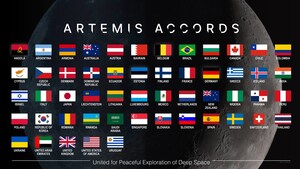WASHINGTON, Oct. 4, 2011 /PRNewswire-USNewswire/ -- NASA has selected nine proposals to demonstrate new technologies for the second set of payloads to fly on commercial suborbital reusable launch vehicles and the Zero-G commercial parabolic aircraft. NASA is using commercially available vehicles to carry these technology demonstration payloads to help develop the U.S. commercial reusable suborbital transportation industry.
(Logo: http://photos.prnewswire.com/prnh/20081007/38461LOGO)
NASA's Flight Opportunities Program provides test flights to demonstrate and validate space technologies on airborne platforms flying above 65,000 feet, the area known as "near space." The program also supports parabolic flights that simulate brief periods of microgravity or weightlessness.
"We're moving out with a set of payloads that can benefit from the proving ground of near space," Mike Gazarik, director of NASA's Space Technology Program at NASA Headquarters in Washington, said. "We're looking forward to increasing the number of commercial flights and technology demonstration payloads flown, with companies providing a viable reusable flying science lab capability for researchers from all across America."
Selected for flight on both a suborbital reusable launch vehicle and the Zero-G aircraft are:
- "Microgravity Multi-Phase Flow Experiment for Suborbital Testing," team leader Kathryn Hurlbert of NASA's Johnson Space Center in Houston.
Selected for flight on suborbital reusable launch vehicles:
- "Application of Controlled Vibrations to Multiphase Systems for Space Applications," Ricard Gonzalez-Cinca, Universitat Politecnica de Catalunya, Barcelona, Spain, and Richard Tyson, University of Alabama in Huntsville
- "Environmental Monitoring Suite on Suborbital Reusable Launch Vehicles," H. Todd Smith, and Lars P. Dyrud, Johns Hopkins University Applied Physics Laboratory, Laurel, Md.
- "Measurement of the Atmospheric Background in the Mesosphere as a Pre-cursor to Astronomical Observations," Sean Casey, USRA/SOFIA, Moffett Field, Calif.
- "RF Gauging of the Liquid Oxygen Tank on a Reusable Launch Vehicle," Gregory Zimmerli, NASA's Glenn Research Center, Cleveland
Selected for parabolic flight aboard the Zero-G aircraft:
- "Assessing Vestibulo-Ocular Function and Spatial Orientation in Parabolic Flight," Mark Shelhamer, Johns Hopkins University School of Medicine, Baltimore
- "Evaluation of a Medical Chest Drainage System Functional in the Microgravity Environment," C. Marsh Cuttino, Orbital Medicine, Inc., Richmond, Va.
- "Autonomous Cell Culture Apparatus for Growing 3-Dimensional Tissues in Microgravity," Zarana Patel and Janice Huff of Johnson and Colin Pawlowski of Yale University
- "A demonstrated application of a cost effective and novel platform for non-invasive acquisition of physiologic variables from spaceflight participant candidates," Ravi Komatireddy, University of California at San Diego and West Wireless Health Institute of San Diego
The Zero-G aircraft flights are expected to take off in April 2012 from Ellington Field in Houston. The suborbital reusable launch vehicle payloads are expected to fly on vehicles produced by Armadillo Aerospace, Masten Space Systems, Near Space Corporation, UP Aerospace, Virgin Galactic, Whittinghill Aerospace, or XCOR Aerospace. NASA selected the seven companies in August to integrate and fly space technology payloads. The suborbital reusable launch vehicle payload flights tentatively are scheduled to begin in early 2012.
NASA selected the proposals following an announcement of fight opportunities issued last December. NASA called for proposals that demonstrate or mature new technology payloads using parabolic aircraft or suborbital reusable launch vehicles for reduced gravity or near-space flights. The announcement will remain open until December 31, 2014.
Flight Opportunities, part of the Space Technology Program within NASA's Office of the Chief Technologist, is managed at NASA's Dryden Flight Research Center in Edwards, Calif. NASA's Ames Research Center in Moffett Field, Calif., manages the payload activities for the program.
For more information about the Flight Opportunities program, visit:
http://flightopportunities.nasa.gov
For more information about the announcement and request for information, visit:
and
SOURCE NASA
WANT YOUR COMPANY'S NEWS FEATURED ON PRNEWSWIRE.COM?
Newsrooms &
Influencers
Digital Media
Outlets
Journalists
Opted In




Share this article